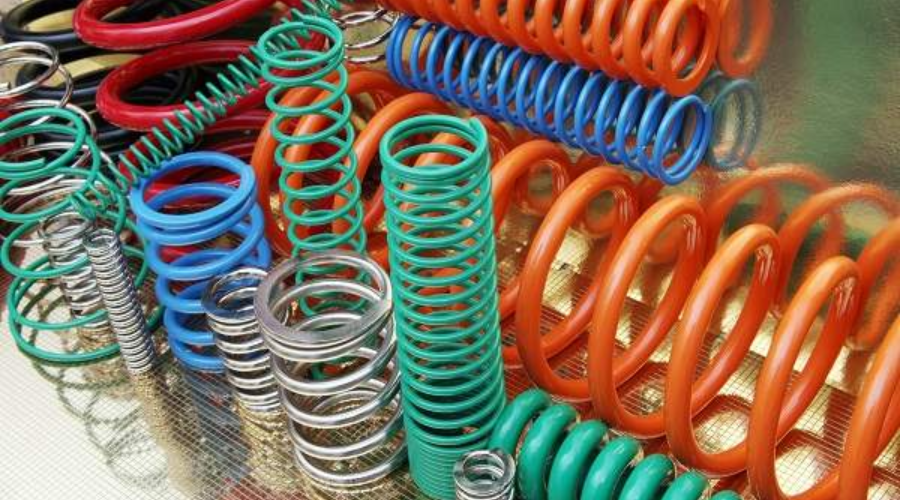Different products need different types of springs. Not just types but also sizes, grades, and material types matter. If you pick a compression type, you must choose between standard and precise springs. They seem similar, but they are way different in performance levels. To illustrate better, here is a breakdown of a simple guide.
Springs with precise shape, diameter, length, and elasticity are called precision springs. They are not like standard ones. They deal with strict conditions where no chance of error is tolerated. Some industries can not use standard or basic springs. They only need springs that are specially made for specific situations. You can also call them customized types because of their sharp details.
Their tight tolerance and accuracy make them different from other types. This is why their manufacturing process is also complex. Their performance is much higher than the standard ones. What makes them different is their accuracy, zero chance of error, and high resistance to collapse. Metal quality is always higher since these springs have to deal with harsh environments. Their corrosion resistance is remarkable because of that reason. Hence, their customized production is provided by manufacturers for specific applications.
Industries like medical, aerospace, automotive, and electronic goods prefer precision springs. The reason is the criticality of working conditions. Likewise, the aerospace industry relies on them because high stakes are involved in it. Electronics and automotive industries, where high-end machines are manufactured, also want them.
They are simple ones with less precision than the precision springs. However, their less criticality does not make them less demandable. Industries also demand them, but the precision level is low. You will find them available in specific sizes with the same results for most appliances. They are suitable for mild or mediocre conditions. Likewise, their metal quality is mediocre since they don’t have to withstand harsh conditions.
Their manufacturing process is also simple since they are suitable for moderate applications. The metal quality is usually capable of bearing regular environmental conditions. They are suitable for mild temperatures. In the production process, their quality tests are less strict than those of the precision types. The machines used for their production also use simple techniques.
They work great in household items, automotive parts, and consumer electronics. These are the applications where one does not need high precision or customization. Standard springs are suitable for low-end applications since some electronic goods are high-end and some are low-end.

Standard springs do not need high tolerance. Their simple design and low tolerance are enough for standard applications. However, precision springs always require high precision. High tolerance is used in the production process to prevent errors.
The difference in material makes both types suitable for their respective working conditions. Manufacturers make standard springs with carbon steel or stainless steel of mediocre quality. Meanwhile, the precision spring gets superior quality material like high-grade stainless steel, brass, etc. As a result, precision springs become compatible with extreme working conditions.
The cost of production for precision springs is always very high. The reason is the precision level requirements and durability. Material and machine costs are the main factors. However, standard springs require basic methods and medium-grade metals for production. In this way, their production time and cost are lower than those of precision springs.
Precision springs are for specific applications where standard springs can’t survive. Also, in applications where high stakes are involved, one can’t go with standard springs. However, standard springs are the best for everyday products and applications.
Some industries require customized production for eccentric applications. Medical, electronic, and aerospace industries need high-precision springs. Since they can not take the risks of using standard springs in such applications, they need only precision types.
They can survive extreme temperatures and pressure. This durability makes them suitable for harsh applications. Their load-bearing capabilities are high, and industries choose them for high-force applications. Moreover, their consistency level is high, which shows their retractability level is better than standard ones.
Some machines are manufactured with a focus on consistent performance. To keep the repetitive operations consistent, manufacturers choose precision springs for those machines.
If you manufacture general-purpose goods like toys and home appliances, go for standard springs. They can provide good performance without requiring high cost and time in production. They are cost-effective springs for medium—and low-end products.
Household items of different kinds require standard springs for simple functions. That includes furniture, toys, kitchen appliances, etc. Manufacturers do not use precision springs in these cases. They focus on low-cost springs to save on production costs.
You need to follow some factors. Then, you will be able to select the right type of spring for your products and their applications.
Standard springs are better if you are dealing with simple functions and moderate working conditions. Also, if the application poses a low level of heat and corrosion threat, standard springs are better. They will be the right choice for less load and tolerance level.
For applications that need superior performance, high resistance level, and tight tolerance, go for precision springs.